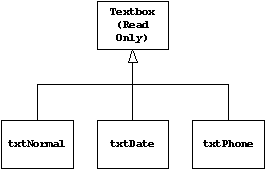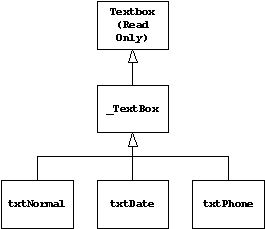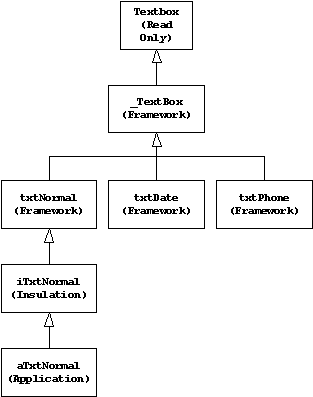Managing VFP Class Libraries
By Steven Black
The more applications you develop, and the bigger the teams that work on them, and the more often the software is revised, the more class library management skills are important. Face it: you can't ship a large application without good class management. as program size increases, proper structure becomes exponentially more important. this session, for advanced visual foxpro developers, is all about being an effective class librarian, and working smart with visual and code class libraries. we'll also talk about the conceptual and physical management of classes and class libraries, how the VFP Class Browser and Component Gallery play complementary roles in class library management, and how library structures are related to component architecture. Time permitting, we'll also look at tools to aid in library engineering, documentation, information dissemination, and tactics for version control.
I'm writing this document to share some sensible practices for dealing with VFP Class Libraries. Be aware that if you work alone, or if you are working on a small project, what I suggest herein matters much less than if you are developing a larger system, and collaborating with several other developers. That's because experience suggests that the complexity of managing Visual FoxPro classes and class libraries varies with the size of the project, the intensity of development activities, the complexity of the project's class design, and on the number of developers involved.
Like the old saying goes, to build a 1-meter high tower, all you need is a few undamaged beer cans. But to build a 10-meter or 100-meter high tower, you need a plan, and you need to pay attention to process and structure. That's what this paper is about: how to structure your class libraries so they can scale, at least a little bit.
So, without further ado
Major Rule: Use your own classes as the basis for the controls in your applications.
Figure 1 illustrates a class hierarchy spawned directly from a VFP base class. This is a classic rookie mistake. The problem here is this hierarchy culminates with a read-only class, a Visual FoxPro built-in base class. To make a global change to the hierarchy you'll need change all the first-level subclasses since the culmination class is read-only, so many of the so-called benefits from using an inheritance hierarchy are largely lost.

Figure 1. A class hierarchy spawned directly from a VFP base class.
Compare Figure 1 with Figure 2, which shows a class hierarchy wherein the classes culminate with a class of your own making. To make a global change to the hierarchy you can make a change to the culmination class (class _Textbox, in Figure 2) and, as long as the subclasses are properly implemented, they will inherit its changes.

Figure 2. A class hierarchy spawned from your own base class.
Using your own base classes between your operational classes and the VFP read-only base classes gives a buffer between your classes and the VFP base classes, protecting the class against changes in VFP base class behavior. It also gives you a way to integrate your own standards into the roots of all your classes.
Minor Rule: Use insulation classes to protect you from version changes.
Arguably the classes provided by third parties should be considered de-facto read-only, even if you possess the source code. Third party classes can be unpredictably volatile. If you make code changes to original third-party sources, you have a problem: how do you reliably integrate your changes in the event of new versions? Moreover consider the parallel problem of how to manage both enterprise-wide and application-specific alterations, and not touch this third-party source.
Insulation layers (Figure 3), sometimes colloquially known as I-Layers, are an artificial culmination point that allow centralized access to framework and other volatile subclassable structures. Reading upwards in figure 3, application-specific classes can vary from project to project, and the insulation layer can normally serve simultaneously as an enterprise feature layer and as a framework isolation layer.

Figure 3. Insulation layers protect you from framework changes at the price of an extra inheritance layer.
Insulation layers are not without obvious expenses. Foremostly they add layers to your class hierarchies, which makes things like debugging more tedious.
If you create software for multiple client, consider creating a layer for each company. This only makes sense in the case where a software company will be working repeatedly for a group of customers. The basic structure is a follows:
VFP base classes
Your VFP insulation layer
Customer 1 classes
Application 1 classes
Application 2 classes
Customer 2 classes
Application 3 classes
Application 4 classes
So an insulation layer is a good architectural idea that comes at the cost of slightly deeper hierarchies. Now, if you're following along, you see that we soon have all these classes in all these layers! How best to deal with them?
Good Practice: Know the VFP Class Browser and Component Gallery, and understand what each does best.
A class library is a physical package of classes. For managing visual class libraries (VCXes) you use the Class Browser. But classes can -- and should -- be abstracted in a variety of other ways. For this we can use the Component Gallery, to organize them, be they VCXes or PRGs, along with all the other elements of our software. The Component Gallery is great for creating virtual and abstract groupings of related items in a way that personally suits a particular situation.
Separate white papers on using the Class Browser and Component Gallery are available for download from http://www.msdn.microsoft.com/vfoxpro.
Good Practice: Use Ken Levy's superclass tool; it lets you see exactly what your inheriting.
The deeper your class hierarchies, the more you'll appreciate tools like SuperCls.PRG, which now ships with Visual FoxPro. Supercls gives you the ability to see and edit superclass code while working in the class designer's code editing windows.
Good Practice: Go to Tools|Options|Field Mapping and set your own base classes as the defaults, this integrates your classes into VFP's IDE
You can use Tools/Options/Field Mapping to create a set of default classes that VFP will instance when dragging fields from the Data Environment. John Petersen has a utility that helps manage field mapping for different projects to different classlibs/classes. Alternately you can use the REGEDT32 program and save the key
HKCU\Software\Microsoft\VisualFoxPro\5.0\Options\IntelliDrop
to a file in each project folder. To switch project mappings all you have to do is double click the file in explorer.
Minor Rule: Minimize the number of classes stored in each class library.
Visual SourceSafe only lets one person check out a class library at the same time. Individual classes, be they stored in VCX or .PRG files, cannot be individually checked out. So checking out a class means checking out the library wherein the class lives.
Moreover the probability of finding that a particular library is not available for immediate exclusive use rises with the intensity of development, the number of concurrent developers, and with the number of classes in each library. These forces imply that you should, as much as possible, shoot for small class libraries.
Remember that Visual Class libraries, VCX files, are units of physical distribution. It's a good idea to use class libraries to package things that should be packaged together. If this is so, then checking out a class library should give you exclusive access to things that are functionally related. So when designing class libraries, think cohesion instead of type. In this sense, unless you work alone or in a very small team, having a class library for "buttons" or "forms" makes little sense.
Major Rule: Logically store your classes to minimize coupling.
At first glance segmenting classes into libraries appears simple: Keep first-level subclasses in one VCXes, all forms together in one VCX, cool controls together in another, with other VCXes for, say, composite classes, forms, toolbars, and so on. Everything is straightforward and, if anything, things are easy to find.
But the guiding principle of class library segmentation is coupling. Physically arrange your classes so that distributing and reusing them is not hampered by external dependencies. Classes that depend on each other should probably be stored together, or proximately in related class libraries.
Also, if you can avoid .H files, then do so. H files are a pain in Visual FoxPro.
Minor Rule: Don't store customized classes with "base classes" in the same library.
If you follow the general design rule that all classes should spawn from read/write culmination classes, then these culmination classes are required by all the classes in your application. Now to later reuse these classes, you'll want to minimize unnecessary baggage and detritus when referencing superclass class libraries. Do this by keeping superclass libraries very lean.
Consider also segmenting your base classes into visible and non-visible base class libraries, and other divisions as well. That way, if you need to reuse an abstract non-visual class somewhere else, you don't need to link-in the unrelated visual classes that just happen to be in the same package as its superclass.
Good Practice: Prefer short class names - _txt vs _textbox
Visual FoxPro's compiler just checks syntax. It doesn't check for proper use of things like class, field, and variable names. The longer your class names, the greater the probability of a typo.
Good Practice: Don't go overboard naming your classes according to their pedigree.
While it's generally a good idea to prefix or suffix class names according to a (or any) sensible naming convention, I don't recommend going overboard with hierarchical naming conventions. In other words, avoid naming classes like this:
Txt txtLevel1 txtLevel1Level2 txtLevel1Level2Level3
The reason for this is evident the minute you start redefining classes, which invariably happens if your class design isn't perfect.
Good Practice: Know when to store classes in PRGs, and when to store them in VCXes
Pros of PRG class libraries:
- PRG file is a single package, VCX is two (counting the VCT).
- Using a PRG allows it to be compiled while read-only.
- Using a PRG allows multiple developers to work in the same class although care should be taken when
- merging during check-in as VSS merge dialog is less than clear about its intentions.
- Allows a developer to easily see the difference between different versions
- Supports conditional exclusion of methods (and properties) using compiler directives--very helpful in
- debugging by optionally removing an error handler.
- Can easily add comments to individual properties.
Cons of PRG class libraries:
- Makes class structure much harder to understand due to the lack of a property sheet and class browser.
- Many developers are less comfortable in code.
- Can't use any of the ClassBrowser services
- Automated parsing of VCXes is far, far easier than parsing PRG, so many advanced maintenance functions are much easier with VCXes.
- Some of these cons will be addressed in VFP 7, as suggested by the direction indicated in the preview we saw at DevCon.
Good Practice: Know the VFP metadata structures
VFP's VCX files are but DBFs by another name. In this light, all of Visual FoxPro's designers (class designer, form designer, menu designer, report writer, and project manager) are just data entry program to fill VCX, SCX, MNX, FRX, and PJX structures.
Sometimes the most efficient way of doing something is to open and edit the class library as a normal table. This means USE xxx.vcx EXCLUSIVE, then edit the contents of something like the ClassLoc field directly and close the file. Then execute 'COMPILE FORM xxxx' (if you are hacking a .SCX) or 'COMPILE CLASSLIB XXX' (if you are hacking a VCX).
Back the files up before you try this - if you make a mistake you could lose the whole structure.
A cool thing to do is write batch programs that can manipulate directories full of forms in one go. Something like the following code which re-pointers the class library location attribute for all the forms in a directory.
lnFormCount = ADIR( laForms, '*.SCX' ) FOR lnCnt = 1 TO lnFormCount USE ( laForms[lnCnt] ) EXCLUSIVE REPLACE ALL classloc WITH <newpath> ; FOR classloc = <oldpath> USE COMPILE FORM ( laForms[lnCnt] ) NEXT
Major Rule: The "class" of a VFP composite class applies only to the underlying container.
Visual FoxPro supports a variety of containership abstractions. Formsets can contain forms, forms contain controls, grids contain columns which contain controls, optiongroups contain optionbuttons, and containers and custom classes can contain almost anything.
You can have, for example, an address visual class used to display addresses that contain textboxes and labels and perhaps some interactive behavior. But don't be fooled by appearances: The only pure classy thing about a container of objects is the container. The objects in the container are instances of other classes.
When you put a textbox class in another container class, you are not creating a subclass of the textbox, you are creating an instance of it. A subclass of your container will contain textboxes that inherit from your base textbox class, not from changes you make in the textboxes in the superclass container.
Read Drew Speedie's article, 'Dangers of Composite Classes in Development' (FoxPro Advisor, Feb 1998). The general rule is only create composite classes that you intend to instantiate, not that you intend to subclass.
Minor Rule: Use your own classes in your VFP grids and commandgroups.
Add your textbox classes to the grid columns and remove the FoxPro base textboxes. Just drag your textbox from the forms control toolbar into the column, then to eradicate the original text box by selecting the FoxPro base textbox and press delete.
Minor Rule: Understand when you should, and shouldn't, bundle VCXes in your app.
Do you have to distribute class libraries within executables? No! You can choose to exclude any file from a project and as long as it is along SET PATH then VFP will find it at run-time. Of course, you'll have to remember to distribute the proper files, but this strategy buys you great update and customization flexibility.
Major Rule: Use Source Control to Protect Your Class Libraries
Henceforth I talk about Visual Source Safe, but what I say applies to PVCS or any other leading source control systems you might be using.
Good Practice: If you are in experimental mode, coding from the seat of your pants, use the Source Safe safety net.
I often find that I would like to be able to copy a class so that I can experiment with it without committing any changes. This is the sort of thing Visual SourceSafe lets you do. You can, at any time, rollback to any previous version.
Guideline: Realize that Source Control Integration comes with baggage
Visual FoxPro comes with source code integration, but you don't have to use it that way. In fact many developers I respect eschew source control integration and use the source control products interactively. There are many reasons for this. Foremostly you'll notice that Source Safe gets progressively slower as its source database gets larger. Secondly the VFP integration provides few of the features and control available with using the Source Safe client interactively. Third, irritating Source Safe dialogs come up and clutter your VFP desktop, and forth the integration is managed with poorly documented intermediate files that are prone to being forgotten or erased as you copy files around in your development environment.
Guideline: Occasionally clean out your Source Safe project.
Source control is overhead. If you are using source control integration and you find that response time for opening a file is beginning to lag, consider cleaning out your source control database. I suspect, but can't be sure, that Source Safe response time varies inversely with the size of the Source Safe database, which increases every time you check something in.
Good Practice: Be aware of some common problems with Interactive Source Control.
If every time you open a project you get the message: "An unspecified registry error occurred". This means the project is controlled by Visual SourceSafe, but you don't have VSS activated in VFP, or don't have it installed at all. If you really don't need the SourceSafe link, you can clear the SCCDATA field in the PJX file and set the LOCAL field to .T.
Guideline: VFP needs Read/Write privileges in order to compile its structures.
If you have a project that does not allow building, and you get the error message "Cannot Write to Read-Only Cursor", usually this means a read only file. You probably have of your SCX or VCX files is still set to read-only but not marked as checked into SourceSafe in the project file.
In order to compile forms and classes, those files have to be read/write. This is because VFP stores the compiled code in the VCT or SCT. You probably don't have some VCX or SCX files checked out so they are read only on your drive.
If you are using Source Safe interactively, when you do a Get Latest Version on all files in the project (including tables) make sure you have 'Make Writeable' box option checked. VFP needs many of its structures to be writeable since object code is stored as part of its metadata.
 Steven Black
Steven Black